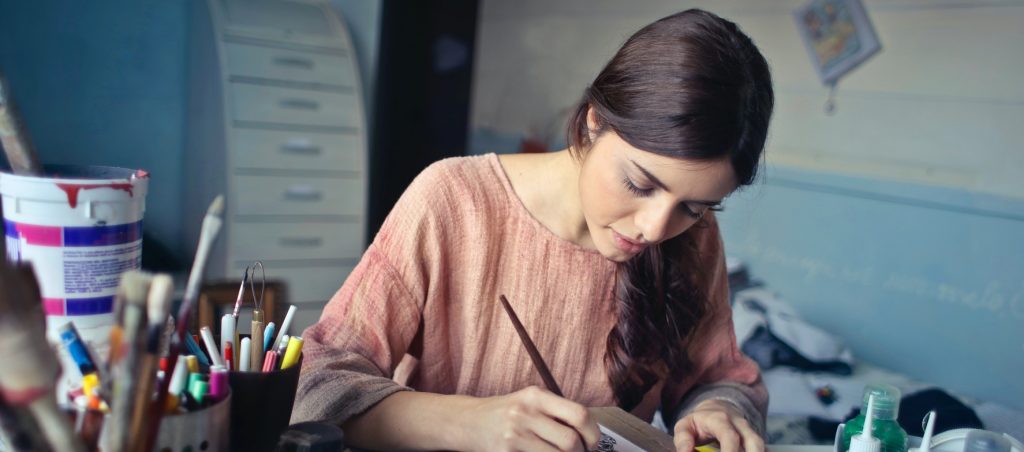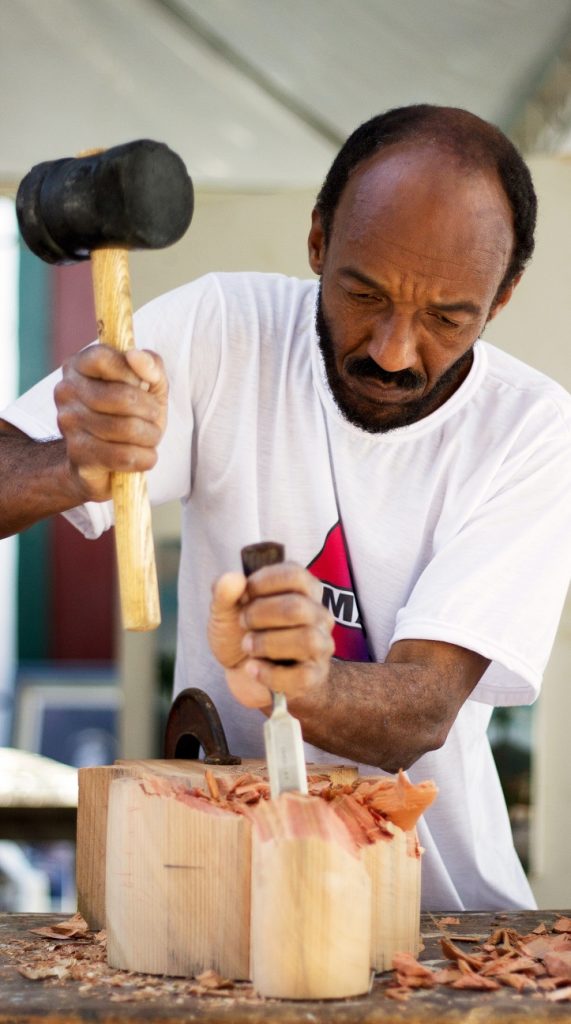
From the northeast to the west coast, artists have been pushed aside for profitable real estate projects. But some creative communities are standing up to developers that would displace them. The artists’ quest to take back their living spaces is making cities stronger and more diverse.
Consider an area in Boston called Fort Point. There, in place of home offices, the members of Midway Artists Collective manage home art studios. They’re teachers, designers, professional musicians, actors, and sculptors. Among the places they call home are 89 spacious, open-plan Midway Artist Studios, built within in a set of former warehouses at Fort Point.
Over the years, they’ve managed to gain ownership and control of their buildings, even as nearby artist groups were moved aside by developers of luxury apartment complexes, offices, chain stores, and banks.
How the Artists Entered the Chain of Title
Keen Development finished a renovation of the Midway Artist Studios in 2005. The historic design was overseen by Spalding Tougias Architects. This all happened while the properties were owned by a developer named Bob Kuehn, who helped some area artists establish co-ops in Boston.
Kuehn died in 2006. The title to the properties passed to Kuehn’s estate. At that time the artist collective received notice that their units were to be sold. They resolved to raise $20 million to buy their beloved warehouse studio lofts with their sunny, refurbished brick interiors.
It helped that the Kuehn estate was willing to work with them. But could they pull together a $2.2 million down payment? Withdrawing funds from their retirement accounts and winning over investors, they did it. As for the rest of the purchase funds, they received support from New Atlantic Development, which has worked with a number of artist collectives and individual artists to preserve their studio homes.
As New Atlantic Development explains:
New Atlantic worked with the residents of Midway to purchase the property in order to preserve its affordability for current and future artist tenants and to preserve the building as an important cultural resource for the City of Boston.
New Atlantic Development inspired the artists to set up a nonprofit corporation. And that’s the origin of Midway Artist Collective Inc. The city government came up with a grant. The collective got low-interest financing under their new name in 2014.
(Re)Developing for the Common Good
For New Atlantic Development, projects aren’t pursued in a vacuum. The group’s work encompasses a reliance on connections with the local community groups that surround their properties. This way, they ensure that urban renewal isn’t taking away from the longstanding culture and people of a place. They focus on synergy, not displacement.
It’s a wonderful model for urban (re)development, based on the principle that commercial and residential projects are best when they include a “collaborative effort to shape change for the common good.” Their projects so far have focused on culturally enriching spaces, mixed income housing, spaces for people with disabilities, and historic preservation that supports people.
As for the Midway Artist Studios, today the properties are run by an elected board of directors. The corporation offers studio homes for rent, and the rentals are accessible to artists with modest incomes.
Renters at Midway may or may not become investors in the corporation. For those who do, the return is satisfying. And the enterprise is financially self-sustaining.
What We Can Learn From San Francisco

Reporting recently for WBUR, Boston’s National Public Radio channel, Amelia Mason took note of the model being fostered by the Community Arts Stabilization Trust (CAST) of San Francisco. CAST is a nonprofit. It’s been working for the last decade to support artists on the verge of displacement. Without CAST, the creative community of San Francisco would be more vulnerable to the high prices that press some of the most culturally diverse communities out of the city.
Making use of grants, low-interest financing, and federal tax breaks for underserved communities, CAST buys San Francisco buildings. The nonprofit has restored four culturally significant properties to date, and is planning its work on four more. It turns them into affordable rental units for local artists and cultural groups. In some cases, it helps renters raise funds so they can eventually buy their properties.
CAST is a form of land trust. It uses deed restrictions to preserve the buildings as cultural properties. Buyers might sell, but the properties will continue to be protected for the model.
The model has its critics. They point out, for example, that sellers can’t take full advantage of their home equity if they are forced to offer their units at below-market prices.
Yet being priced out of the city in the first place is not helping communities. And renters who buy into land trust opportunities are able to increase their incomes yet keep their affordable units. So the concept supports those who will one day want to move out and buy market-rate homes. Meanwhile, the residents can stay in the city they love and be part of what they love most about it — its cultural vitality.
The East Bay Permanent Real Estate Cooperative (PREC) is in nearby Oakland, CA. Instead of a nonprofit land trust, it’s a democratically managed co-op. In its model, renters share in the returns on the property investments.
East Bay PREC recently purchased the building that once housed Esther’s Orbit Room. It was famous for attracting Black musicians to West Oakland. PREC is working to restore it for today’s Black artists. It’s a vital example of how housing and local culture are best understood through a holistic approach to redevelopment.
Calling All Artists: These Cities Want You to Move Here
Artists wait years to get into the Midway studios in Boston. But the Fort Point Arts Community plans to develop 250 new affordable residential artist studios in the city over the coming decade.
And there are other places, too, that actively recruit artists to revitalize their cities.
For the past two decades, Paducah, Kentucky has been on a mission to enhance its style. It’s not only investing in its homegrown creative community. It’s importing artists. The city offers grants and business training for artists. It even covers relocation costs.
In Cumberland, Maryland, grants are available to artistic professionals. Wherever such incentives exist, the artists give as much as they receive, and cities flourish.
As the Allegany Arts Council says, “without working artists, our community is less vibrant and attractive to visitors and new residents.”
These and similar models across the county show that urban renewal need not displace local people and culture. Nonprofits and residents themselves are changing the future of affordable real estate through these collaborative projects. Cities are finding that they can enjoy their full potential and flourish — if their artists can.
Supporting References
Amelia Mason for Morning Edition via WBUR, Boston’s NPR station: Artists, Displaced – To Fight Displacement, Artists Are Buying Up Boston Real Estate (Jun. 21, 2022).
New Atlantic Development, Boston: About Us; Projects; Midway Artist Studios.
The Abundant Artist: Artist Housing Projects.
The Allegany Arts Council: Promoting Health and Well-Being Through the Arts.
Deeds.com: The Land Trust Approach to Affordable Housing (Jul. 29, 2019).
And as linked.
Photo credits: Andrea Piacquadio and Werrley Meira, via Pexels.
